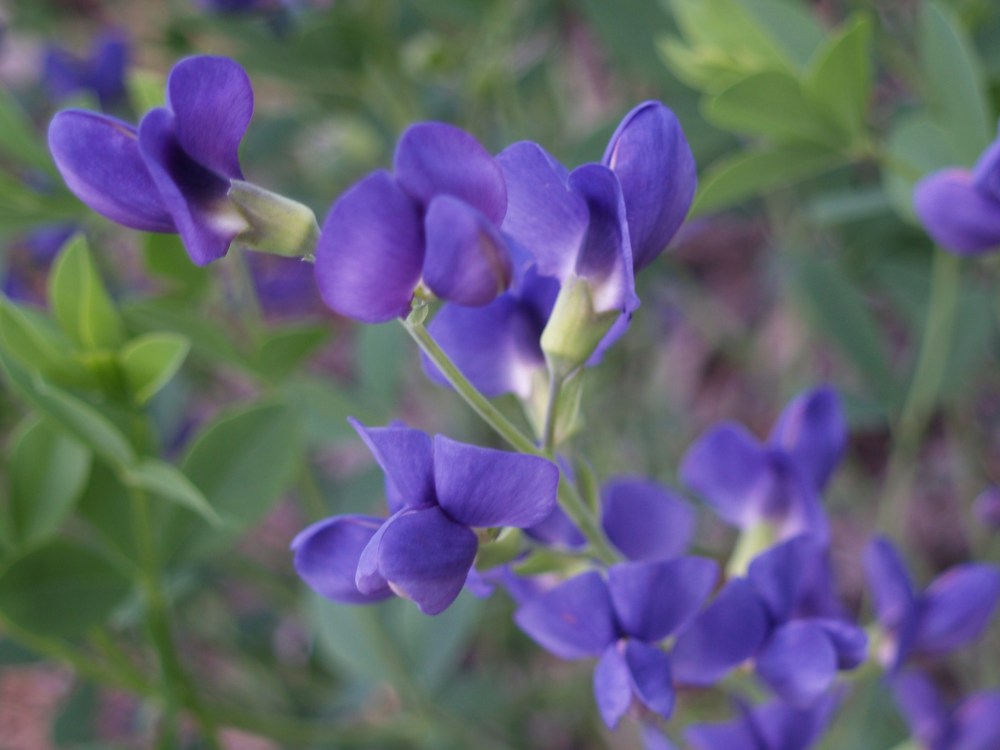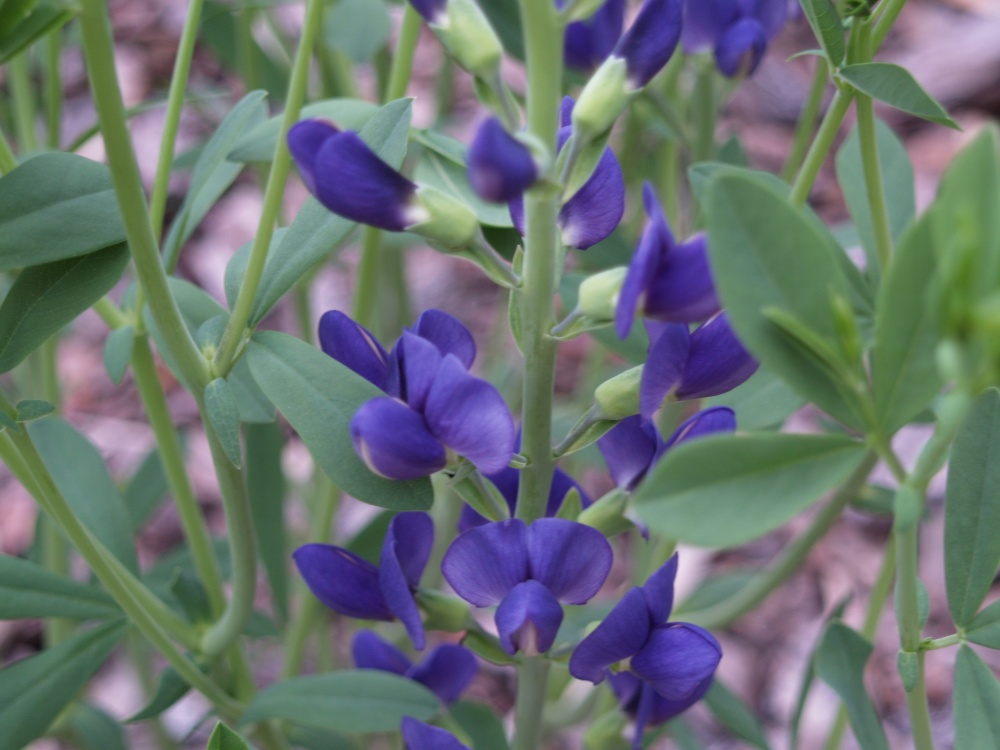The Perennial Plant Association has selected False Indigo, Baptisia australis as Perennial of the Year for 2010. This not a hot, newest introduction, but an old time, sturdy native.
In my garden baptisia was set up for failure. The subsoil excavated to build my large swimming pond was mounded on the lower side of the sloping property, and though the soil’s not horrible, the mound is quite steep and dries out in an instant. I had no illusion that this area would ever receive a drop of water except from Mother Nature, and would be seen by casual visitors only from a distance across the pond, so plants on the backside of this slope needed a bit of height. How’s that for a challenge?
Baptisia has proven a perfect choice, not only tolerating the poor, dry soil, but thriving. I don’t believe that native plants are necessarily more adapted to drought than non-natives, but this native is tough as nails, has nice blue-green foliage, and tall spikes of bright blue flowers. Wonderful!
The baptisias in my garden are seedling grown, not clones from cuttings or division, so each of the six has a slightly different habit, though they bloom concurrently in early May in northern Virginia . One grows taller, fuller, and more stout than the others, with more glaucous foliage that shows no sign of stress through the hottest, driest stretch of summer.
On several occasions my wife has cut the black seed pods that follow blooming for an interior display, and I fear each time I brush the brittle shells that the seeds will burst forth to cause a considerable mess. Though they rattle around the dried pod remains intact.
There are named selections, and a yellow bloomer, and I have no doubt they are fine plants, but Baptisia australis is a delightful choice for the hottest, driest, sunniest spot in the garden. A fine choice for recognition as Perennial of the Year.
thank you for the pruning tips for my snow and wind damaged plants. It looked like tornado ripped thorugh out neighborhood with all the evergreen trees and shrubs. It is costing me a lot to clean cut the many broken branches on the white pines. I think the deer ate all the needles off the hemlock and yews and probably will not survive.
Give your hemlock and yews through April, and I think that you’ll see enough growth to substantiate keeping them. In the future I would recommend spraying with a deer repellent for these evergreens in the winter, and April through October for perennials and other susceptible plants. From experience in my garden I am completely confident that the repellents work.
I don’t have any suggestions on avoiding snow damage other than move to the tropics.